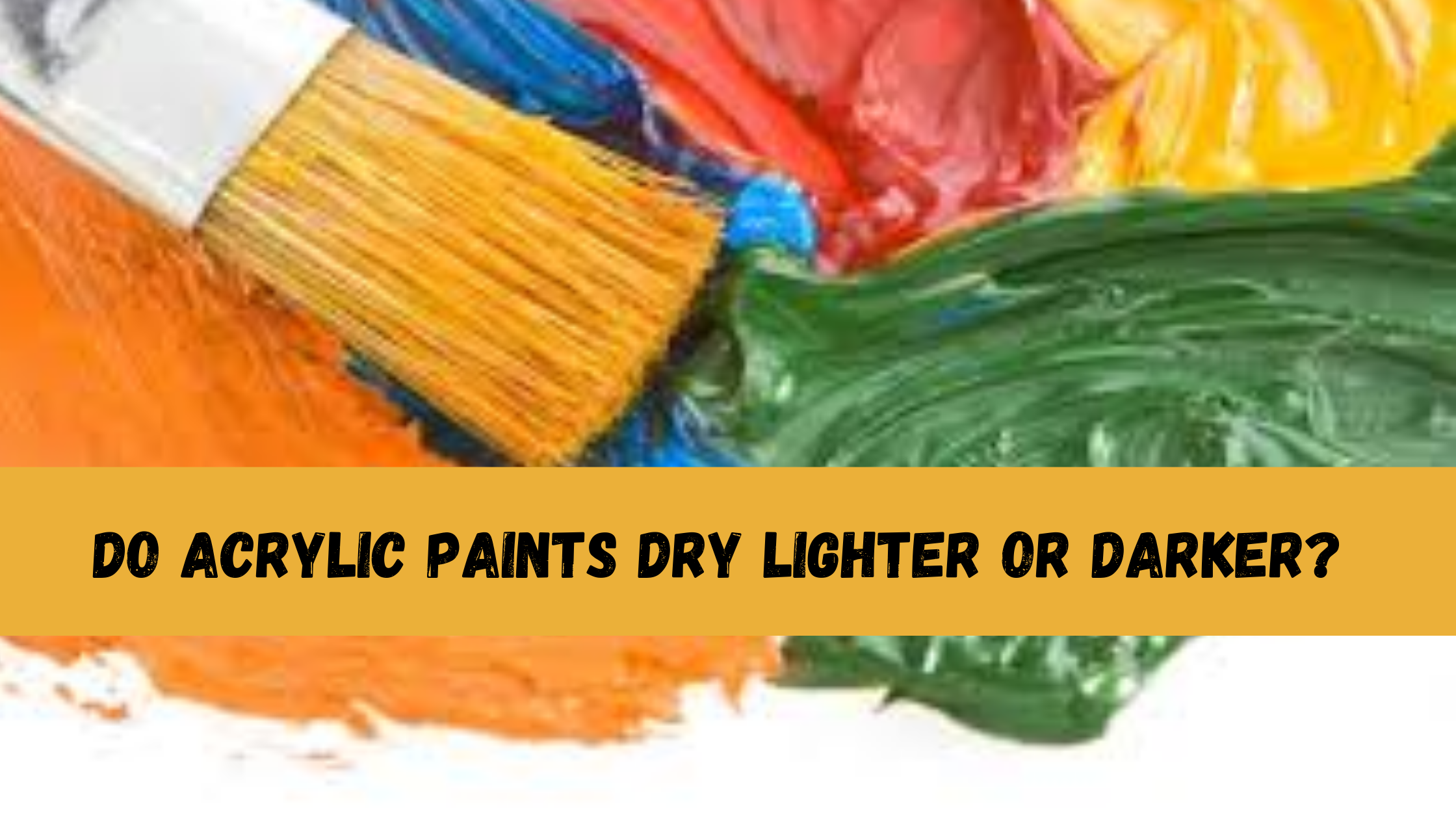Although acrylic paint is more frequently used in artistic and decorative contexts, the way it dries doesn’t make it any less significant than paint for walls.
This kind of paint can be used on canvas, wood, metal, porcelain, and fabric, among other surfaces. When acrylic paint dries, the color will be consistent with the paint swatch but darker than when you start painting.
Do Acrylic Paints Dry Lighter Or Darker?
Typically, the paint dries in a darker color. This is true of acrylic paints. If you have mixed the paint properly, they should still seem exactly like the test Swatch.
Depending on the surroundings, paint can appear darker or lighter. A room will appear lighter if it receives much natural light, and vice versa. The paint may appear deeper if the room has many light-colored furnishings.
Flat paints appear lighter because they absorb the same amount of light as glossy finishes, making them appear darker when reflecting light.
As you can see, many different things affect how a paint hue finally appears on your wall. Your choice of paint, how you hang it on the wall, and even the environment of the space itself will all be factors.
However, despite the fact that paints may appear to apply darker or lighter on the wall, they should dry to the precise shade you were looking for as long as your preparation work was done correctly and you mixed them according to instructions.
Does Applying More Paint Make It Darker?
No, adding additional paint layers won’t make it darker. It will only appear to be such before complete drying because of the paint’s wetness and the wall’s more even coverage.
If you want a darker shade, the first step to getting it is picking out a darker paint in the store. No amount of “lighter” paint, even three or four layers, can make it darker.
You should also be aware that painting your walls with an oil-based paint will probably cause them to become yellow over time if you use more than three layers.
However, applying three or more latex paint coats won’t be harmful. They could be able to assist you in perfectly balancing the finish, particularly if you’re choosing a vivid or pastel color.
Using a sealer is the only coat that will make the paint darker. Its purpose is to cover the paint with a thicker layer of protection. The paint may darken if you apply too many layers.
Factors That Affect How a Paint Color Appears
People must have been whining about how the paint finish was a little lighter or darker than they had anticipated. If this happens, you should know that high-quality paint usually matches the intended color unless you skip the second coat.
Additionally, the paint must dry for at least eight hours. Here are three additional elements that may impact the color of dried paint.
Finish
The paint finish you choose will significantly impact the final appearance. Because the shiny surface will reflect light, glossy paint will dry darker than you anticipated.
Since flat paint doesn’t have a sheen or gloss, it will appear chalky.
Environment
When choosing colors for interior paint, consistency is key. By doing this, you can assure that the environment€”including the furniture, plants, and picture frames€”will not adversely affect the outcome.
As a result, you should always think about a paint sample and determine whether or not it harmonizes with the décor of your room.
Brightness
Natural light will subtly accentuate the color of your walls rather than abruptly reflecting off them. Try adding a light source and altering the existing ones if you are having difficulties attaining the paint color you want.
How Can Darker or Lighter Paint Be Avoided?
Nobody wants their efforts to be in vain and for the paint to dry darker or lighter than they had hoped. You must carefully mix the solution and test the paint swatch in such circumstances.
You should have the following in mind as you paint:
- Always get high-end paint.
- Make sure it is warmer than 60 degrees Fahrenheit.
- Retain the room’s humidity at 50%.
- Remember to apply a primer
- Don’t paint the wall in certain places again. Instead, apply second or more coats.
Faqs
What happens to acrylic paint when it dries?
Acrylics dry, in their most fundamental form, through the evaporation of water and other “volatiles” from the paint film. The acrylic solids move towards one another as these depart, eventually contacting one another and forming a film.
Why do acrylic paints cost so much?
In order to make up for the extra time required to produce thicker parts, manufacturers will have to charge more for such pieces. The cost of the materials is another aspect. More ingredients are needed to manufacture thicker acrylic.
Conclusion
Acrylic paint has a smooth surface and is a water-based paint that actually dries quickly. Depending on a number of variables, including the depth of the paint and the kind of surface it’s applied to, the color of acrylic paint may appear darker or lighter after drying.
Testing the paint color on a small area before applying it to the entire surface is preferable to avoid surprises. You can guarantee a good acrylic painting project by doing the necessary planning.
Beatrix Ainsley (Bea to her friends) is an abstract artist who was heavily inspired in her twenties by the abstract expressionist movement of the 1940s. Since then Bea has acquired three degrees in Science, Education and most importantly Fine Art. Her art works showcase exploring emotion and introspection of self. To achieve this – the use of bold, sweeping, intricate layers of color, and spontaneity of form is enhanced by reflecting on decades of life experiences. Bea has amassed a vast knowledge of art in all its forms, and hopes to pass it on with her contributions here.



